The Story of Culture and Arts
- Image resource of Korean history
- Documents from History TextBooks
- Culture & Art Stories from Korean History
- Culture & Art Stories from Korean History - Korean
- National Institute of Korean History
- History net
- About the site
- Introduce
-
Numerous topics related to Korean culture and art are mentioned in middle and high school national history textbooks, but most of them are briefly described by era, making it difficult to understand their concepts, transition processes, and characteristics.
<Culture & Art Stories from Korean History> produces and provides video materials based on expert commentary on the flow, change process, characteristics and characteristics of each major topic in the field of culture and art in Korean history.

Scenario
A modern society with extraordinary digital capabilities. Yet, physical personal seals are still used today. The use of seals was more widespread during the Joseon Dynasty than today. Even the king, head of the Joseon Dynasty, had his own special seal.
This was the royal ceremonial seal, the eobo. It differed from the state seal, or guksae.
So when was the eobo used?
Let’s look at the seal that symbolized the legitimacy of the Joseon royal family, the eobo.
Difference between the Guksae and Eobo, the King’s Royal Seal?
The guksae was with the king at every event, carried carefully to signify his authority. The guksae was the seal used on all official documents, domestic or diplomatic. The eobo and guksae look similar, so when was the eobo used?
Eobo were ceremonial seals created when kings, queens, and crown princes were proclaimed. Eobo were made for newly bestowed regnal names, posthumous honorary names, and temple names of kings and queens.
There was a marked increase in the number of Eobo during the late Joseon period. This was because regnal names were frequently given out to buttress royal authority.
The masterpiece of Joseon Dynasty seal art! Let’s take a closer look at the ceremonial eobo.
First, the material used in an eobo differed depending on who it would belong to. Those for kings and queens were made of gold. For crown princes and below, they were made of jade.
Eobo have flat bottoms engraved with Chinese characters, a thick, sturdy base, a sculptured handle, and a decorative tassel. The handle (nyu) made in the form of an animal during the Joseon Dynasty was typically a turtle. After the declaration of the Korean Empire in 1897, it was primarily dragon shaped.
A name and rank were carved on the bottom. The eobo of kings, queens, and previous royalty ended in the character “bo.” Those of crown princes and below ended in the character “in.”
When a seal was engraved, rather than using a straight font, they used one with twists and turns. Although this font was used to represent the royal house and the state, it was also used to prevent forgeries since it was difficult to copy.
There are eobo with unique fonts besides the nine-turn font. One such eobo is carved with the king’s own handwriting. That is the Silver Seal of Filial Grandson Jeongjo. The 83-year-old King Yeongjo’s handwriting was turned into an eobo for his eldest grandson, Jeongjo.
“In month 2, year 52 of King Yeongjo’s reign, Jeongjo made an appeal to King Yeongjo. He asked to have his father (Crown Prince Sado)’s records removed from the Daily Records of the Royal Secretariat (Seungjeongwon ilgi), although his father’s death would be recorded in the Veritable Records of Joseon Dynasty. King Yeongjo viewed this request as one only a filial child would make. He gave Jeongjo “The Letter to My Grandson” along with an eobo he had made that read “Filial Grandson” in his own handwriting.” Seo Jun / Cultural Heritage Expert
20 Artisans Needed to Make a Single Seal?
How many people do you think are needed to make one seal? Unlike modern seal-making, where one person can do it, many artisans were needed to make a single eobo for Joseon royalty.
If we examine the Boinso uigwe, a record containing the process and expenses for making a royal seal, it states that 77 people were involved: 29 administrators, including two ministers, 23 artisans, and others.
Why did they need so many artisans? It has to do with how the eobo was stored. Eobo are stored in no less than six wraps and boxes. So much care is taken in its storage that insect-repelling herbs are also packed with it.
You need someone to create not only the eobo, but also the silk pouch, the outer lacquer box, the gold inner box, the large cloth wrap, and the lock; thus many artisans were needed.
Where are these carefully crafted eobo stored? Eobo representing royalty are enshrined in the Royal Ancestral Shrine, or Jongmyo Shrine, when their owner passes. Perhaps this is why more royal seals stored in the Jongmyo Shrine survive today than state seals stored in palaces.
About 366 eobo were made during the Joseon Dynasty. But dozens were lost during the Japanese Occupation and the Korean War. Recently, several eobo found abroad were returned to Korea, bringing the current count to 323.
In 2017, eobo were designated UNESCO Memories of the World. But other countries also made royal seals. What’s so special about the Korean eobo?“Other countries, like China and Vietnam, also made royal seals. But those royal seals were limited to one or two famous individuals. Korean seals are unique in that they are like a complete set, starting from the first king of Joseon, Taejo Yi Seong-gye, to the final Emperor Sunjong and Empress Sunjeonghyo of the Korean Empire. They were seen as regalia that supported the legitimacy and permanency of the Joseon royal bloodline.” Seo Jun / Cultural Heritage Expert
Eobo, royal seals symbolizing the royal family even in modern times. Through these seals, we can see the 500 years of power and authority of the Joseon Dynasty.
[Epilogue]
Must-Know Facts on Culture and Art in Korean History
1. The guksae was the king’s administrative seal while the eobo was a ceremonial seal.
2. The only eobo to have been written in the king’s handwriting is the silver seal of filial son Jeongjo, given by King Yeongjo to Jeongjo.
3. When its owner died, an eobo was stored in the Jongmyo Shrine.
Fine Arts & Crafts
18 films-
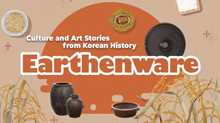 Earthenware08:28
Earthenware08:28 -
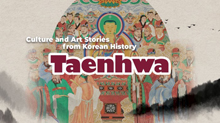 Taenghwa, or Buddhist Paintings in the Joseon Period08:36
Taenghwa, or Buddhist Paintings in the Joseon Period08:36 -
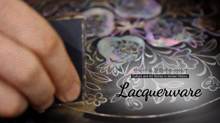 Lacquerware09:04
Lacquerware09:04 -
 Dyeing and Weaving08:21
Dyeing and Weaving08:21 -
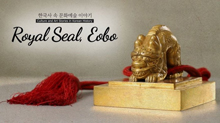 Royal Seal, Eobo07:53
Royal Seal, Eobo07:53 -
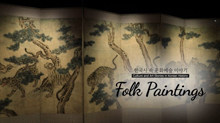 Folk paintings07:49
Folk paintings07:49 -
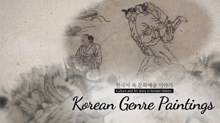 Korean Genre Paintings10:05
Korean Genre Paintings10:05 -
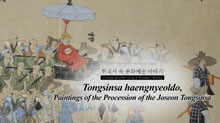 Paintings of the Procession of the Joseon Tongsinsa10:09
Paintings of the Procession of the Joseon Tongsinsa10:09 -
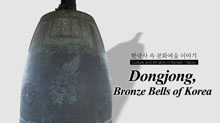 Dongjong, Bronze Bells of Korea08:50
Dongjong, Bronze Bells of Korea08:50 -
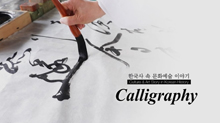 Calligraphy08:32
Calligraphy08:32 -
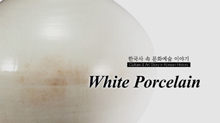 White Porcelain08:18
White Porcelain08:18 -
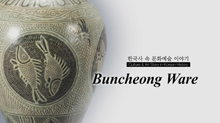 Buncheong Ware07:48
Buncheong Ware07:48 -
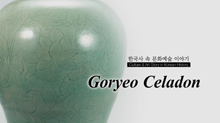 Goryeo Celadon07:54
Goryeo Celadon07:54 -
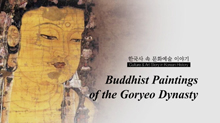 Buddhist Paintings of the Goryeo Dynasty07:57
Buddhist Paintings of the Goryeo Dynasty07:57 -
 Clay Figures, Figurines07:01
Clay Figures, Figurines07:01 -
 Clay Earthenware06:05
Clay Earthenware06:05 -
 Paintings of the Joseon Dynasty08:09
Paintings of the Joseon Dynasty08:09 -
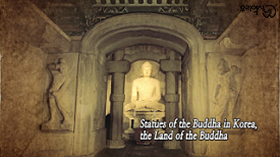 Statues of the Buddha in Korea09:03
Statues of the Buddha in Korea09:03

